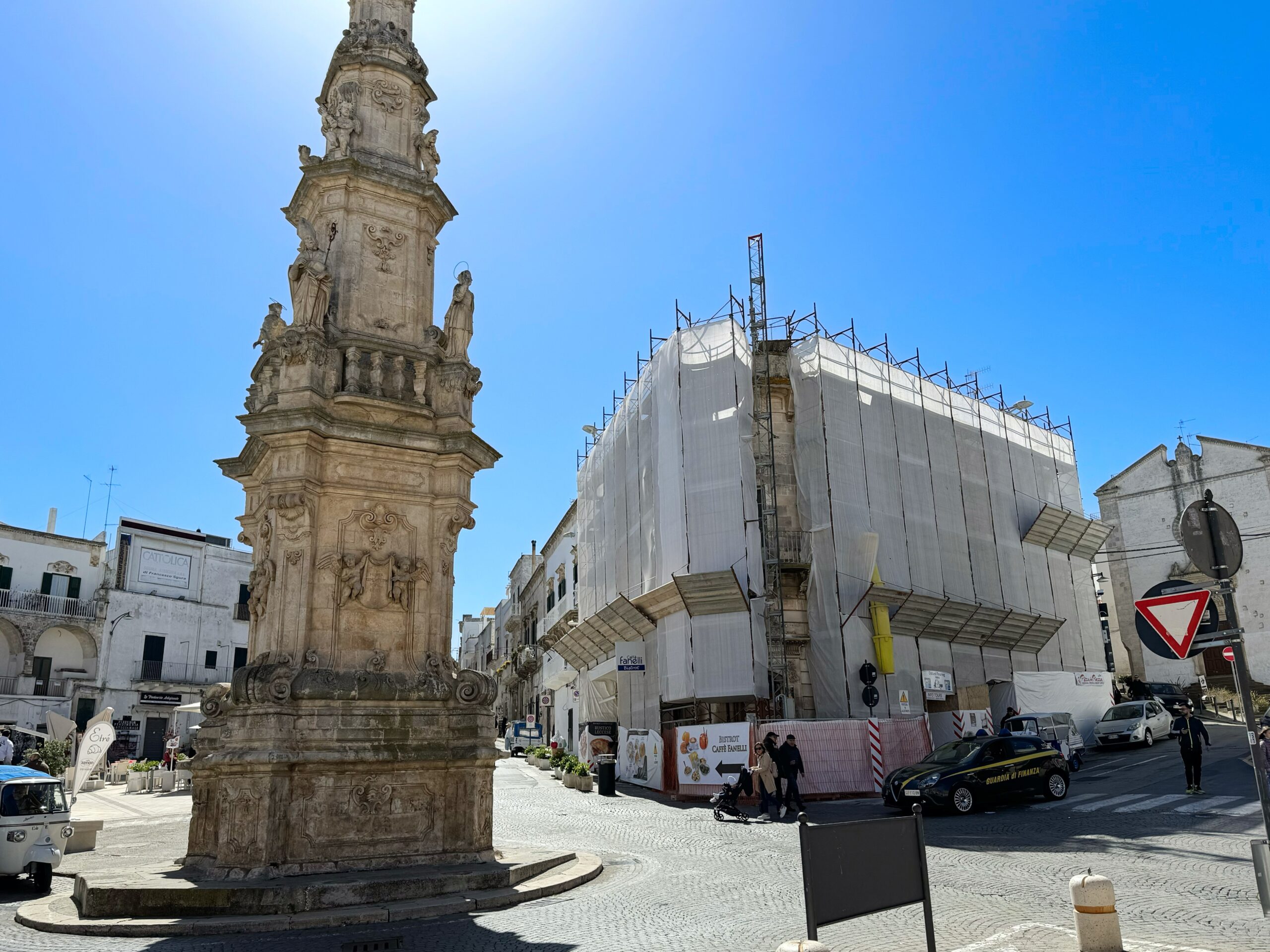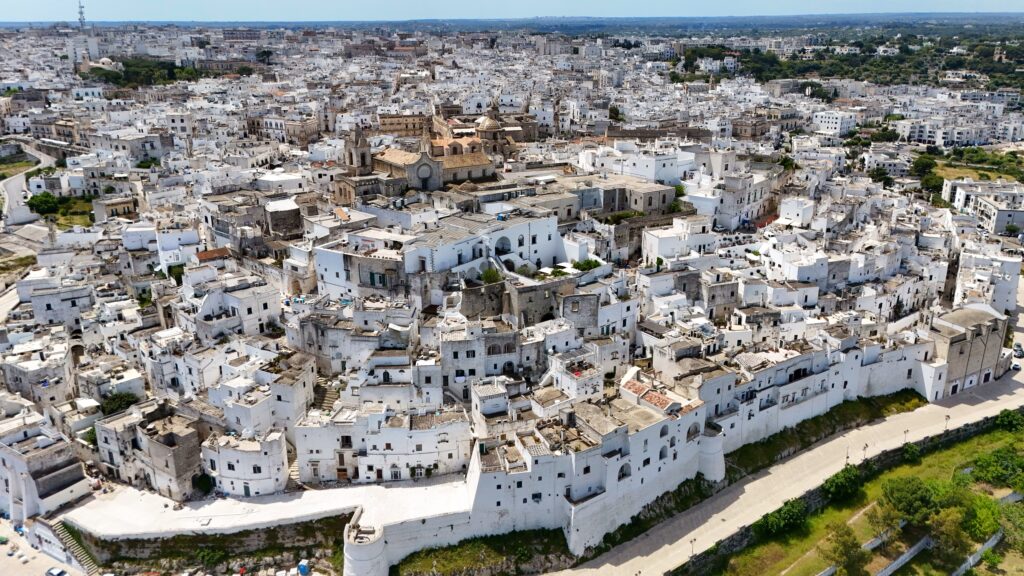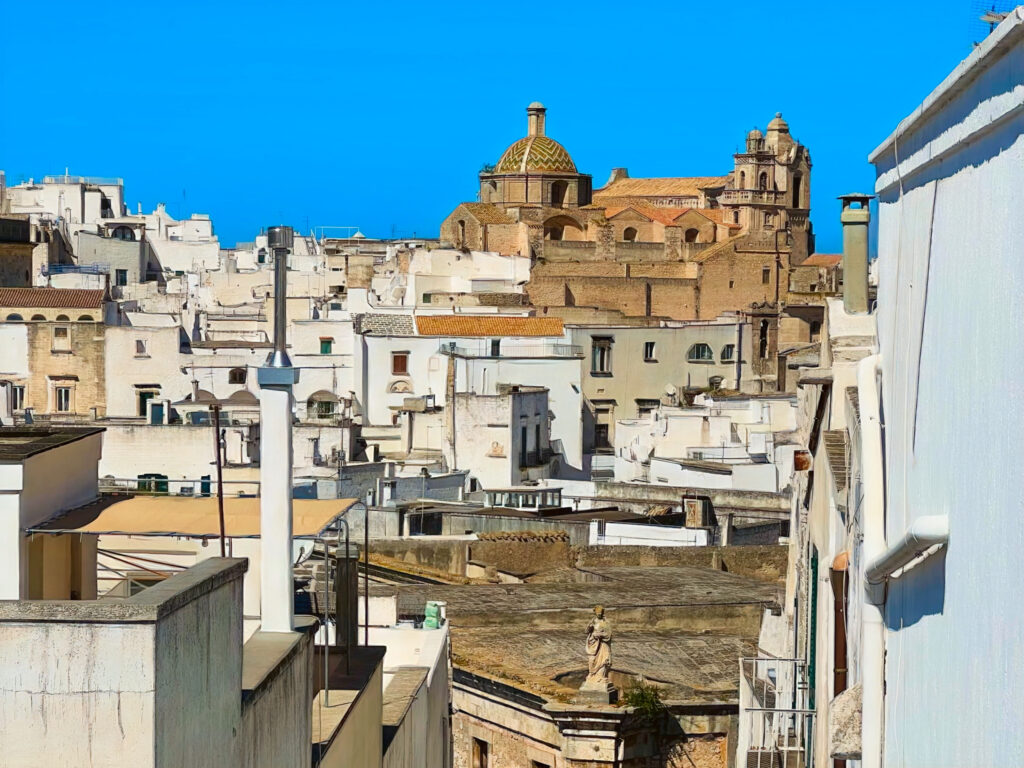Ostuni’s ambitious endeavor to erect a futuristic OLED screen billboard display has hit an unexpected snag, courtesy of some eerie echoes from Italy’s past.
Construction works on what was poised to be a cutting-edge addition to Ostuni’s skyline, a hi-tech OLED screen billboard spanning the facade of a prominent building, have been halted. The reason? None other than remnants of fascist era graffiti etched on both sides of the building.
The phrase “Odiare gli inglesi” (hating the English), though scrubbed, remained visible, presenting a dilemma for the Ostuni municipality. The Italian Government Ministry of Culture (MiC) has stepped in, ordering the preservation of this historical graffiti, much to the dismay of the local authorities.
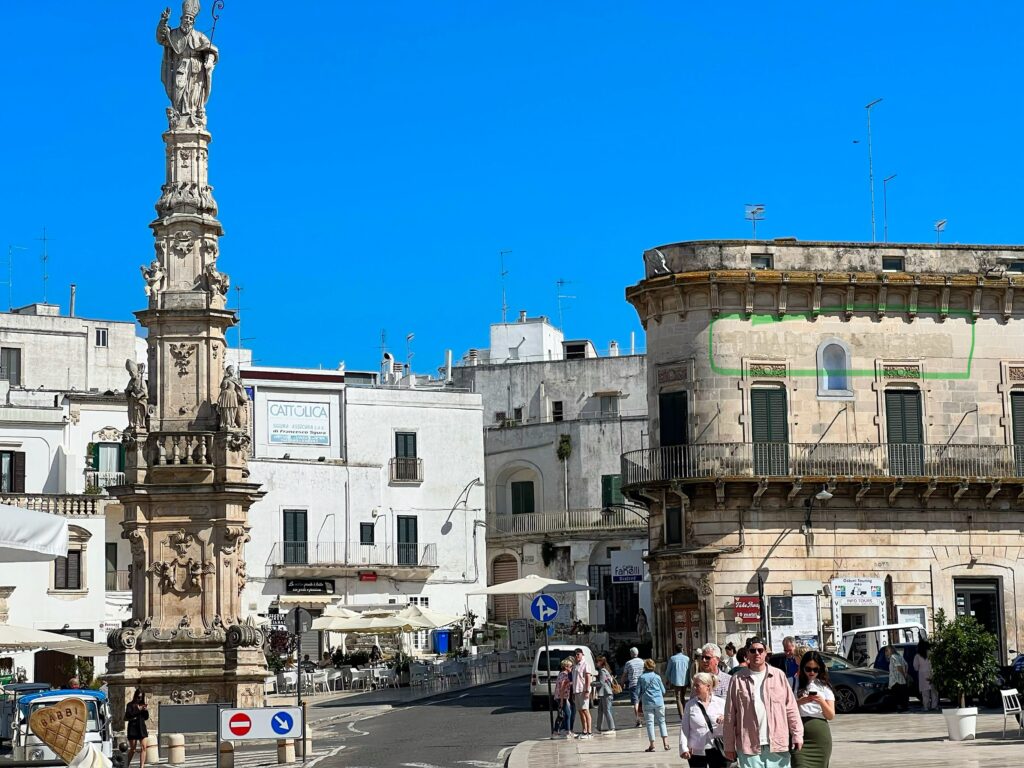
The timing couldn’t be more surreal, considering Italy’s current political landscape. With Prime Minister Georgia Meloni, leader of the Brothers of Italy party, at the helm of a center-right coalition government, the decision to preserve the fascist era graffiti adds another layer of complexity to the situation.
To comply with the directive, the municipality has been forced to redesign the billboard screens around the graffiti, ensuring its continued visibility. Avril Lapesce, a spokesperson for the municipality, expressed disappointment at the additional costs and the abrupt changes imposed by the Italian government.
Despite these setbacks, there’s a silver lining on the horizon. The construction is slated to be completed just in time for the G7 Leaders’ Summit, hosted by Prime Minister Meloni in Puglia. The hi-tech display, equipped with facial recognition software, promises to impress world leaders with its innovative features.
“We anticipate Ms. Meloni will be especially proud to showcase the billboard to British Prime Minister Rishi Sunak,” Lapesce remarked, hinting at the inspiration drawn from London’s iconic Piccadilly Circus. The preserved graffiti, with its unmistakable message, is sure to catch the eye of the British contingent.
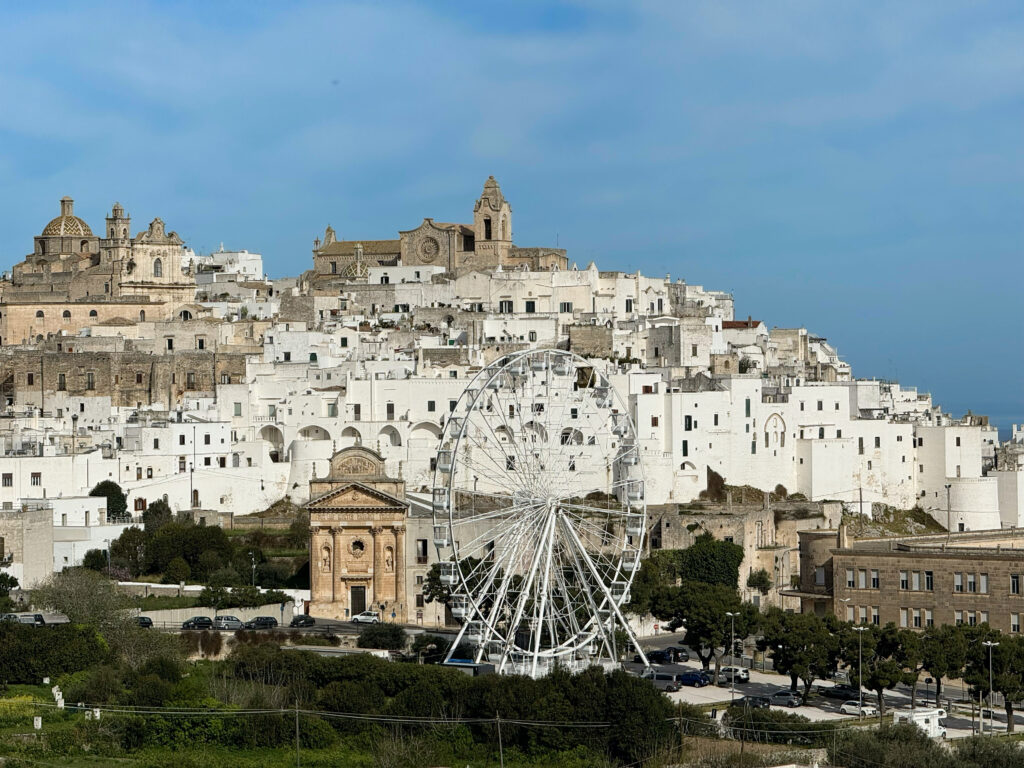
This project comes hot on the heels of Ostuni’s installation of a London Eye-style observation wheel, albeit at the cost of much-needed car parking spaces. With a nod to tradition and a glimpse into the future, Ostuni is poised to leave a lasting impression on visitors, politicians, and perhaps even unsuspecting historians.

